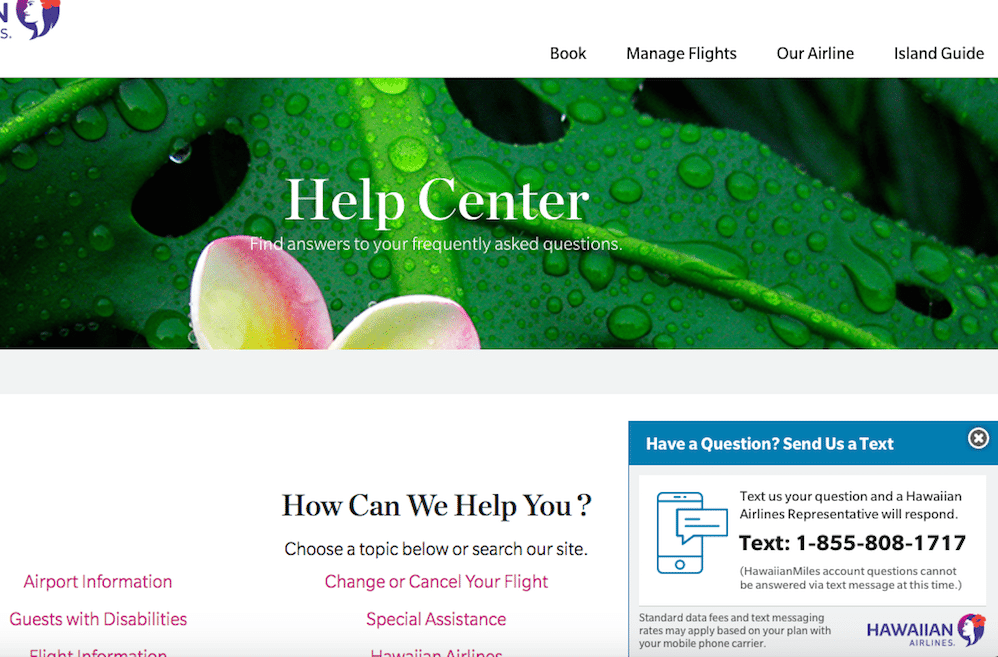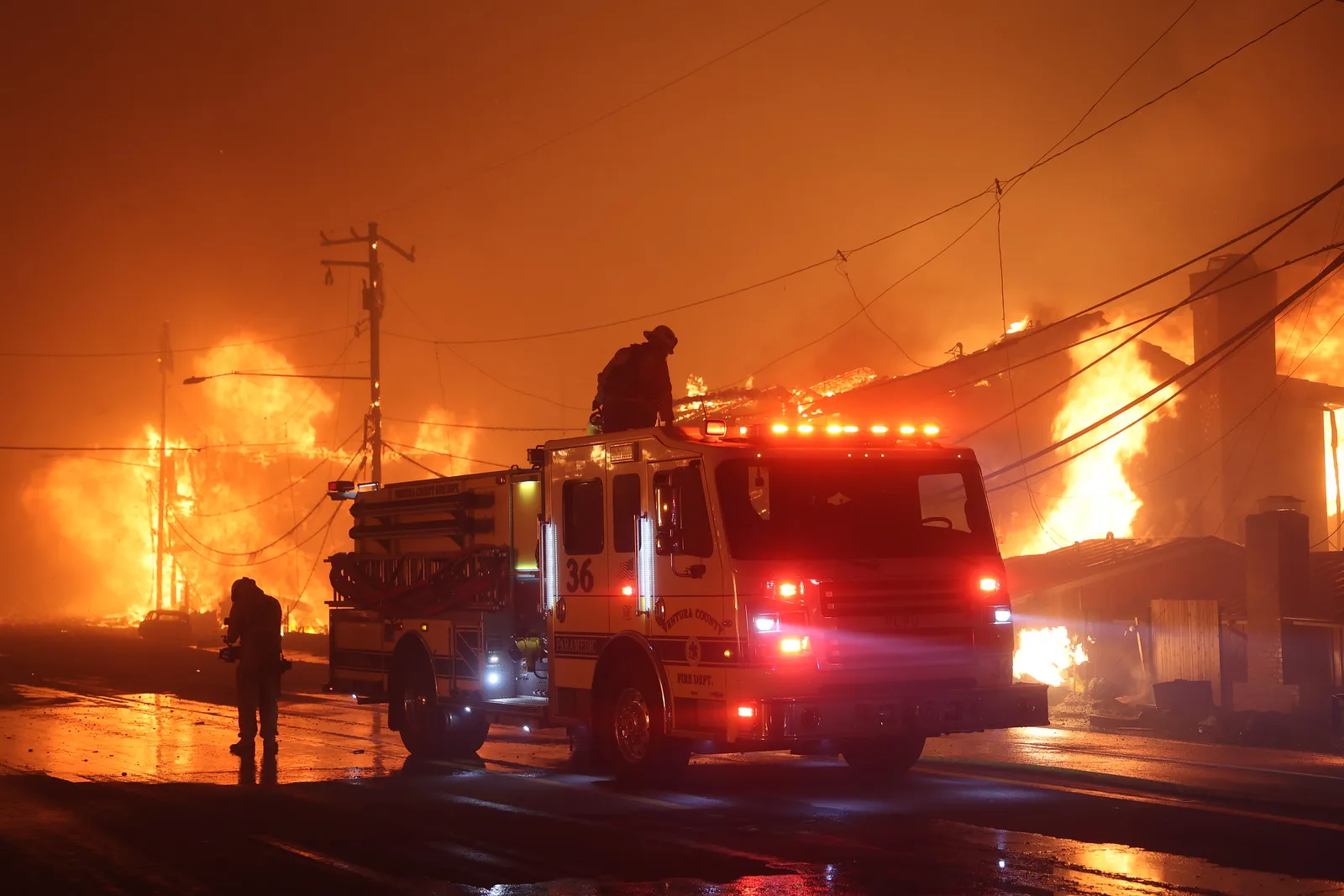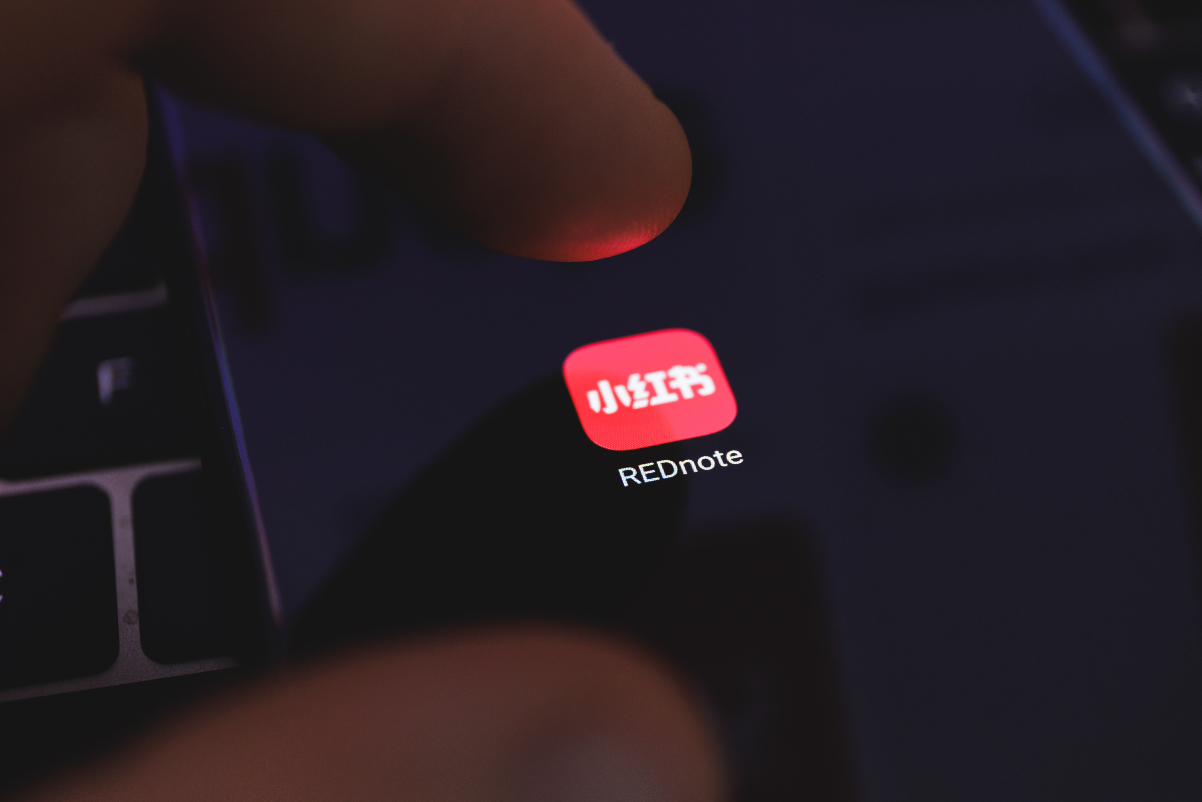Hawaiian Airlines Is Handling Customer Service Inquiries Via Text Message

Skift Take
As some of its competitors use bots programmed with artificial intelligence to answer travel questions, Hawaiian Airlines is going slightly retro with its customer service strategy — at least for the short term.
No, it's not enlarging its call center, or hiring more phone agents. But airline employees have begun answering questions via text messages, allowing agents to be twice as productive as on the phone, according to an executive with LivePerson Inc., the company that provides the technology.
Sometimes, agents help customers re-book their flights. But more often, they respond to simple questions, like, "how much do checked bags cost?" and "how can I change my flight?" Occasionally they handle more unusual queries, such as "can I stow my scuba fins in the overhead bins?" and "can I take poke (the famous Hawaiian raw fish snack) through airport security?" (The answer? Yes, but you must drain the sauce first.)
"Our hypothesis is that most brand consumer interactions are very poorly done today," said Rurik Bradbury, head of global communications and research for LivePerson. "Often there are 800 numbers with holds. But we message all day. What we think is that brands should do the same."
But while the messaging technology has been around for awhile, many airlines have been reluctant to add it. Some carriers do resolve complaints via direct messaging on Twitter, but Bradbury said most airlines respond only because they fear social media blow-ups. Twitter may not be the perfect channel, but airline executives know if they don't write back, angry passenger may use it to complain publicly.
Phone messaging is more private, and more akin to traditional calls to 1-800 numbers. For a long time, Bradbury said few airlines wanted to ask phone agents to respond to messages. Now, he said, that's changing, in part because younger customers demand it.
"People who run contact centers are quite conservative," he said. "They place a huge premium on something that is robust and works all the time, versus using new technology which is unfamiliar."
Hawaiian's Experience
In the near future, travelers may see more airlines invest in messaging. JetBlue Airways announced this week it will work with a company called Gladly on technology that will allow it to respond to queries via text or Facebook Messenger. The airline said it will probably use artificial intelligence to help answer simple responses.
Hawaiian started its all-human mobile messaging program this spring, and so far it has been successful, said Tracy Behler, senior director for online experience. Hawaiian executives believe the airline is among the first in North America to take questions via text messages.
Hawaiian has devoted 12 agents to the platform, and they help about 200 customers per day, with many queries coming between 1p.m. and 3 p.m. in Hawaii — late afternoon or early evening on the U.S. mainland, where many of its passengers originate. Each employee can monitor roughly seven and a half threads at once, or twice as many as agents handle on Hawaiian's more traditional chat service, available through the airline's website.
Agents can handle most of what they can on the phone, but because text messages are not secure, Hawaiian won't accept credit card numbers or respond to specific questions about frequent flyer accounts. About 30 percent of the time agents must tell customers to contact the airline via the phone or online chat — both secure channels. Eventually, Hawaiian also wants to add secure chat to its mobile app.
Agents like answering texts so much that there's a waiting list of employees hoping to move over from phones. Agents find the work less stressful, Behler said.
The system works relatively well, but this is one sometimes-vexing issue with text messaging, LivePerson's Bradbury said. It's sometimes difficult for companies like Hawaiian to determine how much staff to allocate to messaging, and to ensure each person has a manageable number of conversations open. That's different than at most call centers, which, by now, have a good idea how many employees they need at all times.
"With voice," Bradbury said, "they have had 50 years to work on this."
Might be a Short-Lived Approach
In recent months, other airlines have bragged that they can answer most standard questions via bots via Facebook Messenger and other platforms, freeing agents to handle more complex tasks. Aeromexico, for example, prefers to have bots answer queries like, "How much does it cost to check a bag?"
Iñaki Úriz, the CEO of Caravelo, the company that helped build a Messenger bot program for Volaris, another Mexican airline, said about 80 percent passengers ask similar questions — often about baggage — making it possible to send automated responses. In a recent interview, he said only about 15 person of airline-related queries require a specific answer that a bot might not be able to provide.
But even he noted that bots can't solve all problems.
"We will be told that chatbots are here and flawless and they will change everything," Úriz, said. "And, of course, they are not — at least not today. We need to manage expectations and say in some cases, it is better than dealing with a human and in some cases, it is not."
Perhaps for this reason, Hawaiian's wasn't ready to adopt bots, though Behler said soon it may add the technology. Her team is examining chat transcripts to see what questions might be appropriate for a bot response.
"We are really intrigued by AI and chatbots and thinks there is an application for us," Behler said. "But the [text message] pilot was a way for us to learn about the kinds of questions that people have so we can see if a chatbot is going to satisfy their needs."
LivePerson can incorporate bots into its platform, but Bradbury said the technology might not be appropriate for airlines — at least not yet. The company works with banks and mobile phone companies, he said, and for them, the technology works well enough. But he notes that airlines often receive more complicated questions from passengers.
"We have customers that are banks and mobile carriers, and they have a 50 percent containment rate with bots and AI," he said. "They get a big chunk of questions that are standardized. But if you think about the complexity of an airline, a bot would be quickly lost. Bots are good for limited predictable scenarios. For now, you need people there."





